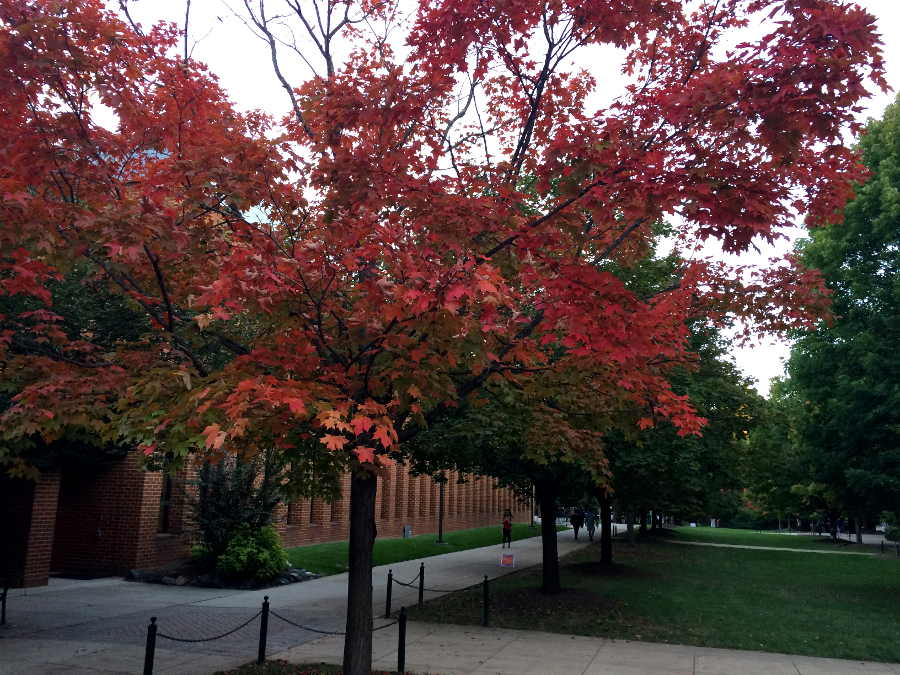
leaves on maple trees, such as those outside the Johnson Center on the Fairfax campus of George Mason University, often turn red in the Fall

leaves on maple trees, such as those outside the Johnson Center on the Fairfax campus of George Mason University, often turn red in the Fall
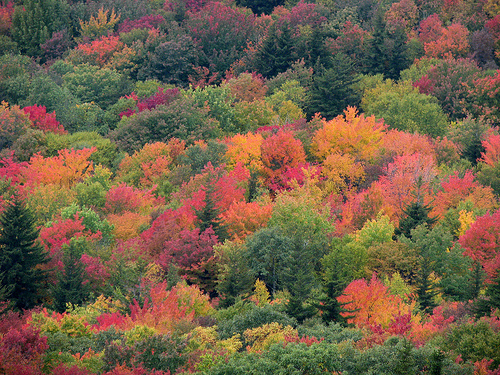 Fall is nigh. I-66 will be jammed with traffic on Sunday evenings in October, as tourists known locally as "leaf lookers" return to Northern Virginia from the Blue Ridge.
Fall is nigh. I-66 will be jammed with traffic on Sunday evenings in October, as tourists known locally as "leaf lookers" return to Northern Virginia from the Blue Ridge.
A geographer question: Why do leaves turn color first on the mountains, rather than on the Coastal Plain?
In addition to shortening day length, plants are alerted by cooler temperatures that winter is coming. Elevation is a factor. For each 3,000 feet increase in elevation, the air will be 10 degrees cooler on average due to the "adiabatic lapse rate." Temperatures get cooler first at the higher elevations, so trees in the Blue Ridge turn red and yellow before trees in the Piedmont forests.
For the same reason, trees in the Blue Ridge develop leaves in the Spring later. The Fairfax Campus of GMU will turn green in April when the forests along Skyline Drive still display bare branches. The Atlantic Ocean stays warm in the Fall, so trees in Norfolk are relatively slow to turn color in October.
Day length is a factor, as well as temperature. The difference in latitude should trigger Fall colors in Northern Virginia first, as the shorter days in higher latitudes such as Frederick County trigger plants to drop their leaves before affecting places in Halifax County at the North Carolina border.
The significance of latitude is more obvious in the Spring. Daffodils and azaleas bloom in Petersburg National Battlefield Park as much as a week earlier than in Manassas National Battlefield Park. Latitude affects temperature as well as day length, so separating out the role of the two key triggers for plant leaf color changes - photoperiod and temperature - is not simple.
Weather and soil moisture have a major impact on when leaves change colors. If late Summer is dry, leaves may just turn brown as the bitter-tasting tannin pigments remain during the leaf's slow decay. If the rest of September is wet and the sun shines brightly during most October days, the forests in Shenandoah National Park and on different mountains in Virginia can be spectacular.
A bioscience question: Why do leaves of some plant species (especially dogwoods, maples, and Virginia creeper) turn red and yellow before dropping off?
One theory is that colors change simply by chance. Protein-based pigments in the leaves decay at different rates. Inside a leaf all summer long are two major pigments. Green chlorophyll captures energy from certain frequencies of light, while anthocyanins, carotenes, and xanthophyll block short-wavelength frequencies from damaging the leaf cells (i.e., the anthocyanins operate like sunscreen).
As the green chlorophyll degrades, the purple/yellow pigments become more visible. As different pigments break down at different rates before a tree drops its no-longer-functioning leaves, the color changes are just an accident. Different species have different ratios of chlorophyll and anthocyanins, so maple trees turn red and hickory trees turn yellow in the Fall as the proteins that form the pigments decay. /p>
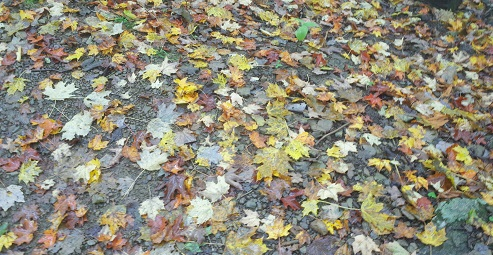
Autumn leaves on Whiteoak Trail in Shenandoah National Park
Source: Shenandoah National Park, Shenandoah's Fall Color
Another theory is there is some competitive advantage for the plants that change colors, because random changes become factors in evolutionary success. One possibility: red leaves indicate already-damaged plant material, so insects laying eggs think the branches with red leaves are already damaged by a previous insect placing eggs there, and insects will find a different place to deposit eggs. By turning color in the Fall, plants may deter insects from laying eggs that will damage new vegetation in the Spring.1
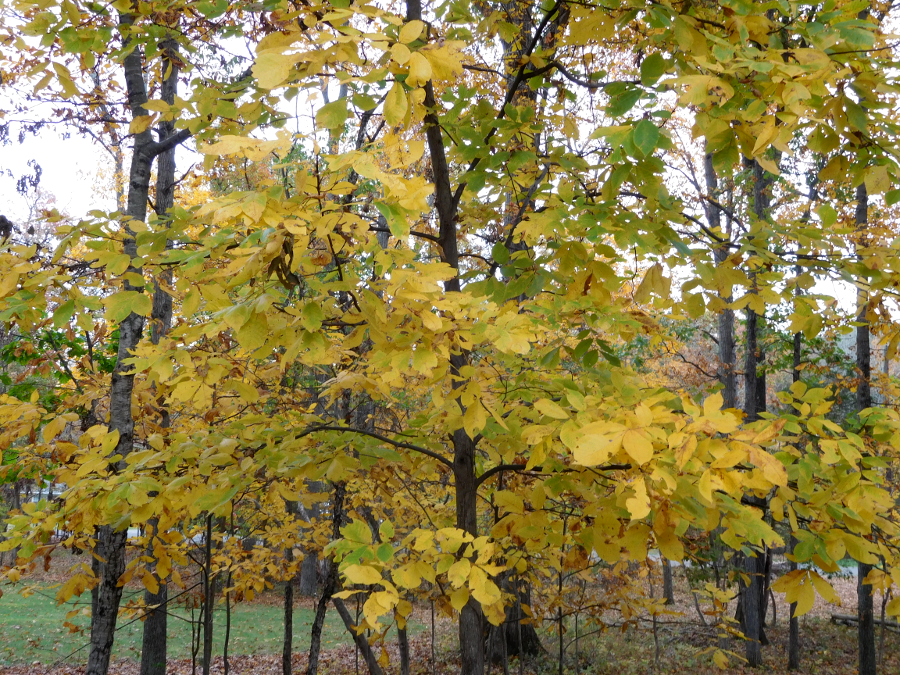
leaves on hickory trees often turn yellow in the Fall
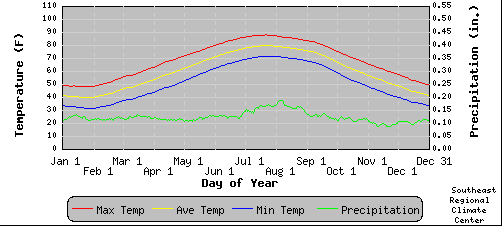
average minimum temperature in October at Norfolk, near the Atlantic Ocean, is 53.6°F
Source: Historical Climate Summaries for Virginia, Norfolk WSO Airport, Virginia (446139)
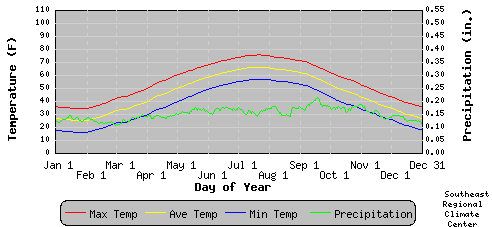
average minimum temperature in October at Big Meadows in Shenandoah National Park, is 38.7°F
Source: Historical Climate Summaries for Virginia, Big Meadows 2, Virginia (440720)